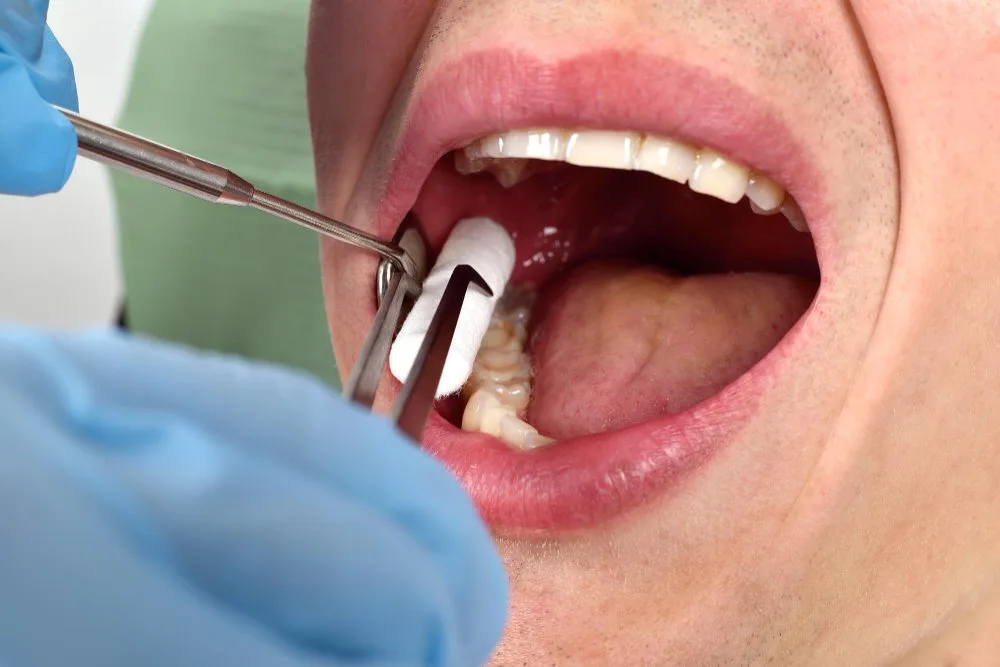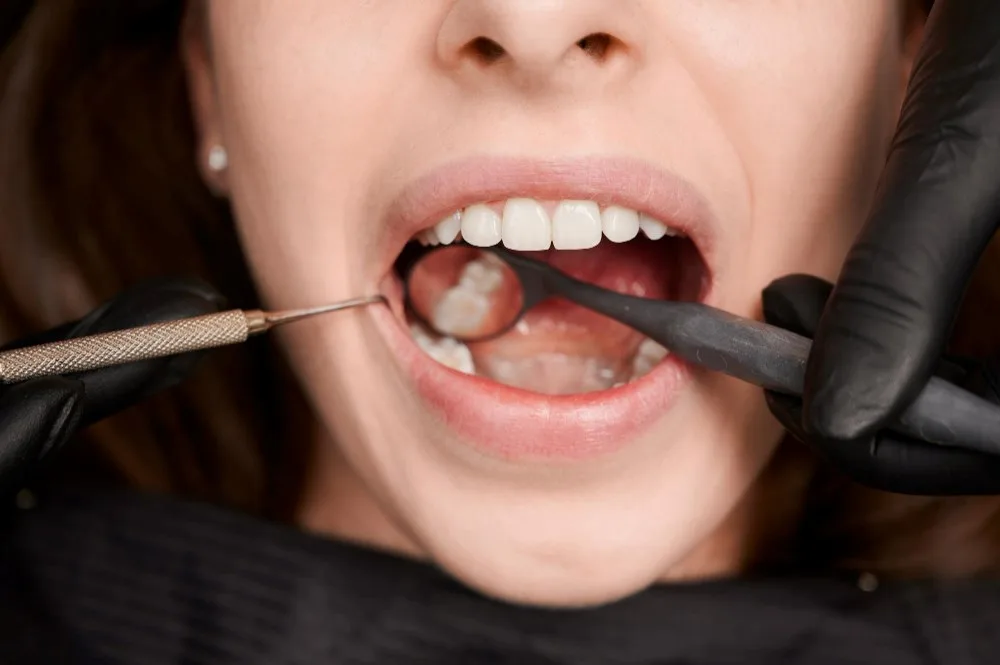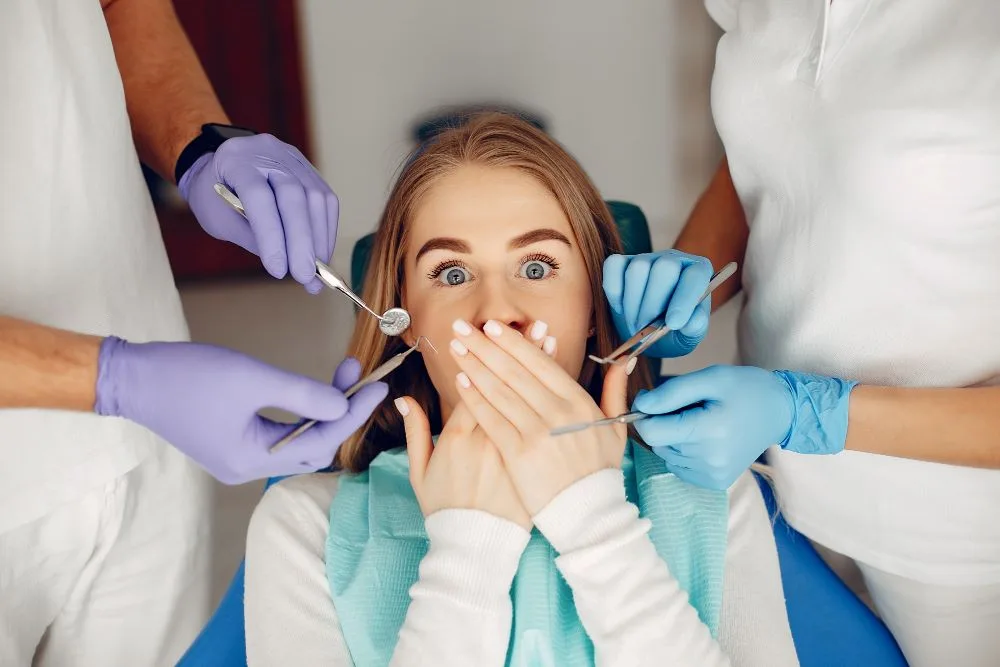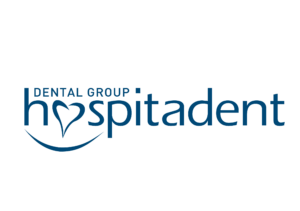What to Eat After Tooth Extraction?
After tooth extraction, what you eat—and what you avoid—can significantly impact how well and how quickly you heal. The body needs time to form a protective blood clot over the extraction site, and any disruption during this early period may lead to complications like dry socket, delayed healing, or infection.
Eating the wrong foods or drinking through a straw may dislodge the clot, while chewing on the surgical site could irritate the area or cause unnecessary pain. A carefully planned post-extraction diet can support healing, minimize discomfort, and reduce the risk of complications.
This guide outlines what to eat, when to eat it, and how your nutrition should evolve in the hours and days after tooth extraction. It also covers foods to avoid, safe hydration, and tips for easing back into normal eating habits without disturbing the healing process.
What to Eat After Tooth Extraction: First 24 Hours Diet
In the first 24 hours after tooth extraction, the main goal is to protect the blood clot and avoid irritating the surgical area. This means choosing foods that are soft, cool, and require minimal chewing.
Good options include smooth yogurt, applesauce, mashed potatoes, scrambled eggs, and lukewarm soups without chunks. These foods are gentle on the mouth, easy to swallow, and unlikely to dislodge the clot. Blended smoothies without seeds or skins can also be soothing—just remember to use a spoon, not a straw.
Cold or room-temperature foods are generally preferred during this phase, as hot foods can increase blood flow and potentially disturb clot formation. Hydration is also important, but beverages should be consumed without suction or pressure.
Avoid any crunchy, spicy, acidic, or sticky foods. Nuts, chips, citrus fruits, and anything that could lodge in the socket or irritate the wound should be strictly avoided.
Eating smaller, more frequent meals can help maintain energy without stressing the healing area. Stick to bland, smooth textures and allow your mouth time to recover during this critical first day.
After Tooth Extraction: What Foods to Avoid in Early Healing
After tooth extraction, knowing what to avoid is just as important as knowing what to eat. Certain foods can increase the risk of complications, prolong healing, or cause significant discomfort if they disturb the surgical site.
Hard, crunchy items like chips, popcorn, granola, or crusty bread should be avoided for at least a week. These foods can break apart into sharp fragments that irritate or cut the gum tissue and even become lodged in the socket.
Sticky or chewy foods such as caramel, gum, or dried fruits pose a risk because they can tug at stitches, stick to the clot, or require excessive jaw movement. Acidic items like tomatoes, oranges, and vinegar-based products can cause stinging or delay tissue regeneration due to their low pH.
Spicy foods may also aggravate the extraction site, especially in the first few days, causing burning sensations or inflammation. In general, overly hot or cold foods should be limited during early healing, as they may trigger sensitivity or bleeding.
By steering clear of these problematic foods, you allow your mouth to heal in a stable environment. Following your provider’s dietary guidance is key to reducing pain and avoiding setbacks during the first phase of recovery.
Drinks After Tooth Extraction: Hydration Without Risk
Staying hydrated after tooth extraction is essential for healing, but not all drinks—or drinking methods—are safe in the immediate post-op period. The act of drinking must be done carefully to avoid disturbing the clot that forms in the socket.
First and foremost, avoid using a straw for at least three to five days. The suction can easily dislodge the clot, leading to dry socket and significant pain. Instead, drink slowly from a cup, letting the liquid flow naturally into your mouth without creating pressure.
Stick to cool or room-temperature fluids. Water is the best choice in the early hours after surgery. Herbal teas that are caffeine-free and not too hot can also be soothing. Clear broths and diluted juices (non-citrus) are acceptable once you’re ready for more flavor.
Avoid carbonated beverages, alcohol, caffeinated drinks, and anything acidic, as these can irritate the wound or interfere with clot stability. Energy drinks, soda, and orange juice should be put on hold until the site is fully healed.
Proper hydration supports immune function and speeds tissue repair. Just be gentle, sip slowly, and choose your beverages wisely to support a complication-free recovery.
Soft Food Ideas After Tooth Extraction for Days 1–3
Between the first and third day after tooth extraction, your diet should continue to focus on soft, non-irritating foods that require minimal chewing. While the clot begins to stabilize during this period, it’s still vulnerable to disruption.
Recommended foods include creamy soups (without hot spices), oatmeal, cottage cheese, avocado, and soft scrambled eggs. Mashed vegetables like carrots or sweet potatoes provide nutrients without requiring heavy biting. Smoothies can become a nutritional powerhouse when blended with banana, nut butter, and protein powder—again, always consumed without a straw.
Dairy-based foods like pudding, yogurt, or soft cheeses are gentle and calorie-dense, helping you maintain energy when your eating capacity is limited. If you’re lactose intolerant, dairy alternatives such as almond milk yogurt or oat milk-based products are also effective.
Avoid anything fibrous, seedy, or with pieces that could lodge in the healing site. Even something as seemingly harmless as rice or quinoa can be difficult to control in the mouth during early healing.
This stage is about consistency and caution. Slowly reintroduce more variety as pain and swelling diminish, but continue to avoid foods that could stick, break, or scratch the surgical area.
After Tooth Extraction: Transitioning Diet at Day 3–7

By days three to seven after tooth extraction, most patients can begin transitioning to a more diverse range of soft foods. At this stage, the clot is stabilizing and early tissue regeneration is underway—but the site remains sensitive and vulnerable to disruption.
You can now introduce foods with slightly more texture, such as well-cooked pasta, soft pancakes, scrambled tofu, ripe bananas, and flaked fish. Steamed vegetables that are mashed or blended also provide nutrition without damaging the healing socket. If chewing is required, do so gently and avoid the extraction side.
Egg or chicken salad, soft rice noodles, and tender pieces of tofu can offer protein with minimal resistance. Warm (not hot) soups with softened ingredients like lentils or barley are also well tolerated. Avoid anything with seeds, skins, or bits that could slip into the socket.
It’s important not to rush back to regular eating habits too quickly. Hard, crunchy, or sticky foods should still be avoided during this stage. Your dentist may clear you for a gradual return to your normal diet based on how your extraction site looks at a follow-up appointment.
This mid-recovery period is ideal for increasing variety while continuing to protect the clot and support the body’s healing response.
Balanced Meals to Eat After Tooth Extraction Once Healing Begins
Once the initial swelling has subsided and the extraction site is beginning to close, typically after the first week, patients can start consuming more balanced meals that support tissue repair, immune function, and overall recovery.
At this point, a nutrient-dense, soft-texture diet is recommended. Include sources of protein like scrambled eggs, ground turkey, soft beans, and tofu. These help rebuild connective tissue and promote cell repair. Steamed leafy greens, mashed root vegetables, and soft fruits like peaches or melons provide essential vitamins without irritating the gums.
Healthy fats from avocado, olive oil, or nut butters (without chunks) support inflammation control and energy levels. Whole grains like soft-cooked oatmeal, polenta, or couscous are also gentle enough for a healing mouth.
Continue to avoid abrasive, spicy, or seeded foods that could scrape or get lodged in the socket. Chew slowly and use the opposite side of your mouth from the extraction site when possible.
As healing progresses, meals can begin to resemble your normal diet—with texture adjustments. Planning well-rounded meals after tooth extraction helps accelerate recovery and ensures you don’t fall short on key nutrients.
Protein, Vitamin C, and Zinc Foods to Eat After Tooth Extraction
Certain nutrients are particularly beneficial after tooth extraction. Protein, vitamin C, and zinc all play a critical role in wound healing and immune defense, making them important components of your recovery diet.
Protein helps repair soft tissue and rebuilds the cells involved in healing. Even if you’re eating soft foods, you can get quality protein from eggs, soft tofu, well-cooked legumes, Turkish yogurt, or cottage cheese. Smoothies made with protein powder and nut butters are also effective when chewing is limited.
Vitamin C is essential for collagen production and tissue strength. Since citrus fruits may be too acidic early on, consider softer alternatives like kiwi, papaya, mango, or pureed cooked broccoli. Fruit-based smoothies without added sugar can be a great way to boost vitamin C intake safely.
Zinc is another nutrient that promotes wound healing and reduces inflammation. It’s found in soft meats like ground beef or chicken, as well as in legumes, dairy products, and fortified cereals. If solid food is difficult, consider adding zinc-rich supplements under your dentist’s or doctor’s guidance.
Eating nutrient-rich foods after tooth extraction gives your body the building blocks it needs to heal faster and with fewer complications.
Smoothies and Soups After Tooth Extraction: Nutrient Boost Without Chewing
Smoothies and soups are two of the best food choices after tooth extraction, especially in the early days when chewing is painful or discouraged. They provide hydration, vitamins, and calories in a form that’s gentle on healing tissue.
Smoothies allow for nearly endless combinations of soft fruits, leafy greens, protein powders, yogurt, and healthy fats. A good recovery smoothie might include banana, almond butter, oats, and a scoop of protein blended with almond milk. To avoid irritation, use non-acidic fruits and skip citrus or frozen chunks with sharp edges.
Just remember: never drink smoothies through a straw after tooth extraction. Always use a spoon or sip from a cup to avoid disrupting the clot.
Soups offer another way to eat without chewing. Creamy or blended soups—like butternut squash, carrot-ginger, or lentil—are ideal during the first few days. Add soft proteins like shredded chicken, puréed beans, or egg drop once you’ve passed the most sensitive phase.
Avoid soups that are too hot, spicy, or chunky, especially early in healing. Stick with warm, soothing broths that nourish without disturbing the socket.
Smoothies and soups can help you stay nourished and energized throughout recovery, especially when solid food isn’t yet an option.
After Tooth Extraction: Safe Oral Hygiene and Cleaning Tips
Maintaining oral hygiene after tooth extraction is essential, but it must be done carefully to avoid disturbing the healing socket. Gentle cleaning helps prevent infection, reduces odor, and supports healthy tissue regeneration.
During the first 24 hours, avoid brushing near the extraction site and do not rinse your mouth, as this may disturb the blood clot. After this initial period, you can begin rinsing gently with a saltwater solution. Mix half a teaspoon of salt into a glass of lukewarm water and swish slowly, allowing the liquid to roll around without forceful spitting.
When brushing your teeth, use a soft-bristled toothbrush and avoid direct contact with the extraction site. Continue to brush the rest of your mouth normally to keep bacteria levels low. Floss carefully but steer clear of the surgical area until advised otherwise by your dentist.
Avoid commercial mouthwashes for the first few days, as their alcohol content may irritate healing tissue. Some providers may recommend a prescription rinse, such as chlorhexidine, to control bacterial growth.
If your provider placed stitches, they may dissolve on their own or need to be removed at a follow-up appointment. Until then, treat the area with caution and report any unusual swelling, bleeding, or odor promptly.
Good hygiene practices after tooth extraction support healing and reduce the risk of complications like infection or dry socket.
Activities to Avoid After Tooth Extraction to Promote Healing
After tooth extraction, avoiding certain physical activities is crucial to support blood clot formation and reduce the risk of complications like dry socket or prolonged bleeding. In the first 24 to 48 hours, the focus should be on rest and gentle movement only.
Strenuous exercise, bending over, or lifting heavy objects can increase blood pressure and dislodge the clot, leading to pain and delayed healing. Most dentists advise patients to take a full day off from work or school and avoid all physical exertion during this initial window.
Smoking and alcohol use are particularly harmful after tooth extraction. Smoking can dislodge the clot through suction and introduce toxins to the healing area. Alcohol can interfere with tissue repair and may also interact poorly with medications such as antibiotics or pain relievers.
Avoid spitting, sucking through a straw, or vigorous mouth rinsing, as all of these create negative pressure that can disturb healing. Even sneezing or coughing forcefully can pose a risk in some cases—try to keep your mouth open if sneezing is unavoidable.
Keeping the head elevated while resting or sleeping also helps minimize swelling and bleeding. Avoid sleeping flat on your back or side for the first night if possible.
By steering clear of these activities after tooth extraction, patients can ensure a smoother, faster recovery and reduce the likelihood of needing additional interventions.
How Long Should You Eat Soft Foods After Tooth Extraction? Timeline Guide

Soft foods are a mainstay of the diet after tooth extraction, but many patients wonder how long they need to follow this limited eating plan. The answer depends on the type of extraction, the number of teeth removed, and your personal healing rate.
For simple, non-surgical extractions, most patients can start reintroducing soft, chewable foods within three to five days. However, this doesn’t mean returning immediately to chips or steak. Think cooked pasta, scrambled eggs, or soft steamed vegetables.
After surgical extractions, especially wisdom teeth or multiple teeth at once, the soft food phase may last up to 10 days or more. Dentists generally recommend sticking to very soft or blended foods for the first 3–4 days, followed by gradual reintroduction of texture based on pain, swelling, and clot stability.
Signs that it’s safe to begin diversifying your diet include reduced soreness, no visible bleeding, and the ability to chew comfortably on the opposite side of the mouth. Continue to avoid anything crunchy, hard, spicy, or seedy until your dentist clears you.
Following a structured soft-food timeline after tooth extraction reduces the risk of complications and helps ensure uninterrupted healing.
Signs of Complication After Tooth Extraction: When to Seek Help
Although most extractions heal without issue, complications can arise. Knowing what to watch for after tooth extraction is essential to identify problems early and seek timely care.
The most common complication is dry socket, which presents as severe, radiating pain starting a few days after extraction. The socket may appear empty or have exposed bone, and the pain often increases rather than decreases over time.
Other warning signs include persistent bleeding that doesn’t subside with gauze and pressure, significant swelling beyond 72 hours, or pus around the extraction site. A bad taste in the mouth or foul breath can also indicate infection.
Fever, chills, or swollen lymph nodes suggest a systemic issue and should prompt immediate dental or medical attention. Numbness or tingling that persists after the anesthetic wears off may indicate nerve involvement and should be evaluated as soon as possible.
If you notice any of these symptoms after tooth extraction, contact your dental provider without delay. Prompt treatment can prevent the issue from worsening and support faster resolution.
It might interest you –> Root Canal Treatment
Recovery Tips After Tooth Extraction: Rest, Ice, and Diet Combined
A smooth recovery after tooth extraction depends on more than just avoiding certain foods. Rest, cold compresses, and gradual dietary progression all play a role in minimizing pain and speeding up tissue repair.
Rest is most important during the first 24 hours. Keep your activity to a minimum, and elevate your head while lying down to reduce bleeding and swelling. Use extra pillows when sleeping and avoid lying flat.
Ice therapy helps control swelling and pain. Apply a cold pack to the cheek near the extraction site for 15–20 minutes at a time, with breaks in between. Do this consistently for the first day to minimize inflammation.
Diet matters just as much. Stick to soft, nutrient-rich foods that are easy to swallow. Avoid straws, hot liquids, or spicy dishes that could irritate the surgical area.
Hydration supports healing but must be done gently—no gulping or forceful swishing. Rinsing with warm salt water after 24 hours helps keep the area clean without disturbing the clot.
Combining all these strategies—rest, ice, and diet—gives your body the best chance to heal quickly and without complications.
For your information –> Dental Implants Turkey
After Tooth Extraction: When Can I Return to Normal Diet and Activities?
The timeline for returning to normal life after tooth extraction depends on the complexity of the procedure and how well the body responds. Most patients can resume normal routines within 2–3 days for simple extractions, though some adjustments may still be needed.
Diet typically returns to normal by day 7 to 10, assuming no complications. Start reintroducing solid foods gradually, and chew on the opposite side of the extraction site until it’s fully healed. Your dentist may advise waiting longer for hard, crunchy, or sticky foods if healing is slower.
Physical activity can usually resume 48 to 72 hours after extraction, though high-intensity exercise should be delayed until swelling and bleeding have fully resolved. Always listen to your body—if an activity increases discomfort or causes bleeding, ease off and give yourself more time.
Oral hygiene routines can also return to normal around one week after tooth extraction. Just be careful near the surgical site until the gum tissue has fully closed.
Full healing of the socket may take several weeks, but most daily functions are safe to resume well before that point. If you’re ever unsure, a quick call to your dental provider can offer personalized guidance.
Click to learn –> Sensitive Teeth

